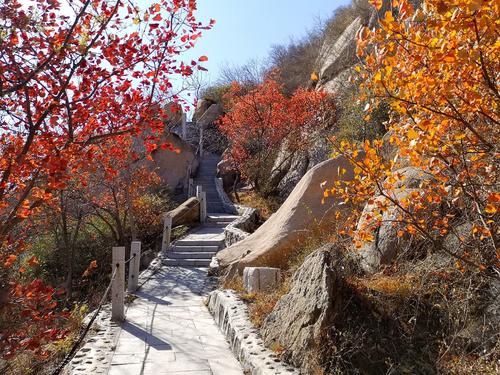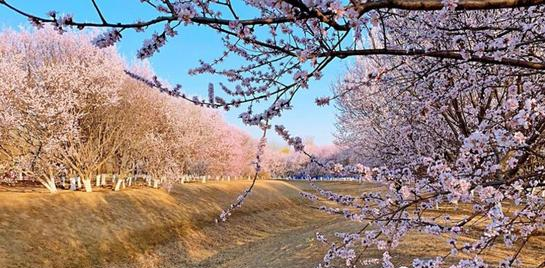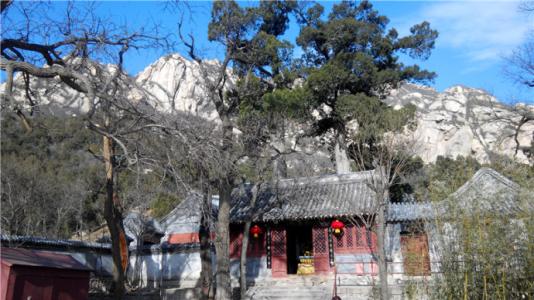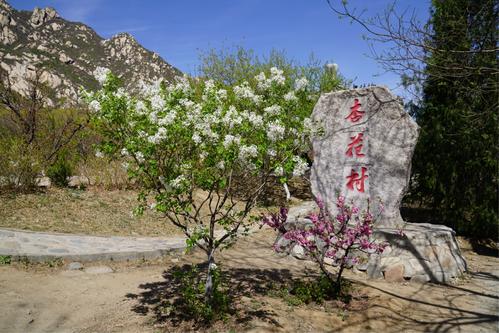Chinese Name: 北京凤凰岭景区 Pronunciation: Běijīng Fènghuánglǐng Jǐngqū
Altitude: About 1276 meters
Suggested Visiting Hours: 5-6 Hours
Mountain Tourist Area: About 10.62 square kilometers
Address: No. 19, Fenghuangling Road, Sujiatuo Town, Haidian District, Beijing
| Tickets | Price | Contents |
| Full Ticket | 25 yuan | Full Fare |
| Discount Ticket | 12.5 yuan | Senior citizens aged 60-65 years with valid ID card or passport |
| 22.5 yuan | 10% discount for group booking (20 or more) in advance |
1. Free for children under 6 years old (including 6 years old) or shorter than 1.2 meters (including 1.2 meters).
2. Free for senior citizens aged over 65 with valid ID card or passport.
| Time | Opening Hours |
| Peak Season (May 1st-October 31st) |
7:00 - 17:30 |
| Shoulder Season (November 1st-April 30th) | 7:00 - 17:00 |

Beijing Fenghuangling Scenic Area is a national 4A level scenic spot. The scenic spot is located in the northwest of Haidian District, covering a total area of 10.62 square kilometers.Beijing Fenghuangling Scenic Area is divided into three scenic areas for tourists: the northern line, the middle line, and the southern line.
The distribution of scenic spots on the northern line is dense, with a perfect combination of mountains and water. Along the way, you can enjoy the strange peaks and rocks, explore the secret caves, and appreciate the flowing springs and waterfalls. The main attractions are the Physiognomy of Sea Cliff, the Geyi Nunnery, the Shangfang Temple, the Linglong Pagoda, the Kwan-yin Cave, and the well-known Tianti (a ladder that can lead to heaven) can be seen on the north route.
The middle line takes the “Longquan Temple” as the starting point and goes along the mountain, you can view the ancient health cultivation sites, such as the Immortal Cave, the Xuanyuan Cave, and the Three-Buddha Cave, all carved in the Liao (907-1125) and Jin (1115-1234) Dynasties. They constitute the largest and most complete cave group for health cultivation. Different caves have different geographical locations and surrounding environments, which may represent the different stages of ancient practitioners’ health cultivation.
The southern line is a resort for seeking adventure and hunting wilderness. The Huangpu Yard, the Guandi Temple, and Lvzu Cave form a “triangular zone” with rich religious and cultural deposits, which is the place where Buddhism, Taoism, and Confucianism converge. With its long history and charming scenery, this “triangle zone” has become a beautiful and fascinating scenic spot. At the same time, the area enjoys many ongoing mysteries, for instance, the mysteries of the Jingangshi (crystals) Tower and Stone Buddha in the Northern Wei Dynasty (386-534).

The Taoyuan Taoist Temple, formerly known as Miaofeng Nunnery, is the first officially opened Taoist temple in Beijing’s Haidian District since the founding of the People's Republic of China and was established during the Ming Dynasty (1368-1644).
In 2003, Huang Xinyang, vice president of the Chinese Taoist Association and president of the Beijing Taoist Association, presided over the renovation of the Taoyuan Taoist Temple. On April 6, 2006, it officially became a Taoist activity site.
After restoration, the Taoyuan Taoist Temple attracts more and more visitors with its unique Taoist health culture and has turned into one of the most characteristic and charming tourist attractions in Fenghuangling Scenic Area.

The Longquan Temple, on the middle line, is the first Buddhist temple in Haidian District of Beijing to open its doors to the public since the founding of the People’s Republic of China. It was built in the early years of the Liao Dynasty (951). The temple was named after the Longquan (literally dragon spring) Pool in the south of the temple.
An ancient stone bridge, as the largest and oldest single-hole bridge in Beijing, is located behind the gate of the temple. There are two ancient ginkgo trees in the temple, one female and one male, which are more than a thousand years old. Also, the ancient stone bridge and ancient ginkgo trees represent the testimony to the thousand-year history of the Longquan Temple.
In 1996, with the opening of Beijing Fenghuangling Scenic Area, the local government and scholars began to repair the temple and gradually restore its original appearance. On April 11, 2005, the Longquan Temple was officially opened as a place for Buddhist activities.

The Che’erying Village is located on a 200-meter-high hillside and covers an area of 120 mu (80,000 square meters). There are 87 households and 320 people in the village, with the agricultural population accounting for 31%. The village was the first professional village in Haidian District to receive folk tourism, with 24 households specializing in folk tourism reception. Nowadays, the Che’erying Village is actively improving their abilities to folk tourism reception and is welcoming visitors from home and abroad.
The best travel time to visit Beijing Fenghuangling Scenic Area is spring and autumn.
The annual Apricot Blossom Festival is held from the end of March to the middle of May, which is the best time for spring outing and flower appreciation.
The annual Autumn Climbing Festival is held from September to November. It is the first choice for climbing and enjoying the scenery in Beijing.
Take bus 346 or Shuttle 16 and get off at Fenghuangling Scenic Area Station.
Chinese: 请带我去凤凰岭景区。English: Please take me to Beijing Fenghuangling Scenic Area.
If you go to Beijing Fenghuangling Scenic Area from the center of Beijing (Grand Hyatt Beijing), it takes about 1.4 hours (about 180 yuan).
If you go to Beijing Fenghuangling Scenic Area from Beijing Capital International Airport, it takes about 1.1 hours (about 250 yuan).
If you go to Beijing Fenghuangling Scenic Area from Beijing Daxing International Airport, it takes about 1.5 hours (about 370 yuan).
If you go to Beijing Fenghuangling Scenic Area from Beijing West Railway Station, it takes about 1 hour (about 150 yuan).
